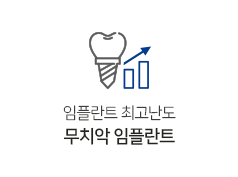Advanced Engaging Techniques for Pay Per Click (PPC) Marketing Success
페이지 정보
작성자 Velda Graf 댓글 0건 조회 28회 작성일 24-09-09 21:30본문
5. A/B Testing:
Experiment with different ad formats, visuals, copy, and targeting options through A/B testing. This will help you identify what resonates best with your audience and optimize your campaigns for better performance.
5. Optimize for SEO:
Search engine optimization (new york seo training) plays a crucial role in making your content discoverable and link-worthy. Conduct keyword research to identify relevant terms and phrases that your audience is searching for, and incorporate them strategically in your content. Optimize your titles, headings, meta descriptions, and URLs to make it easier for search engines to understand and rank your content.
2. Focus on Quality Over Quantity:
Creating link-worthy content is not about churning out a high volume of articles or blog posts. Instead, prioritize quality over quantity by producing well-researched, insightful, and original content that provides value to your audience. Invest time and effort in crafting informative, engaging, and well-written pieces that showcase your expertise and authority in your industry.
1. Know Your Audience:
Before launching any social media advertising campaign, it is crucial to understand your target audience. Identify their demographics, interests, online behavior, and pain points. Tailoring your ad content to resonate with your target audience will increase engagement and conversions.
4. Create Compelling Content
Content is king in the world of social media marketing. From eye-catching visuals and engaging videos to informative blog posts and interactive polls, creating compelling content is essential to capturing the attention of your audience. By maintaining a consistent brand voice and visual identity across all your social media channels, you can reinforce your brand image and increase brand recognition.
4. Use Data and Statistics:
Backing up your claims and opinions with relevant data and statistics can add credibility and authority to your content. Conduct research, collect data from reputable sources, and incorporate relevant statistics to support your arguments and insights. Data-driven content is more likely to be shared and linked to by other websites looking for reliable information to reference.
Remember, the key to successful eCommerce marketing lies in understanding your target audience, delivering value through compelling messaging and design, and continuously refining your strategies based on data-driven insights. By focusing on these principles and staying agile in adapting to changing trends, businesses can maximize the potential of their homepage as a strategic marketing asset in the digital landscape.
3. Incorporate Visual Elements:
Visual content, such as images, infographics, and videos, can significantly enhance the appeal and shareability of your content. Visual elements not only break up long blocks of text but also make the information more digestible and memorable for readers. Ensure that your visual content is high-quality, relevant to the topic, and optimized for various platforms to maximize its impact.
6. Promote Your Content:
Creating link-worthy content is only half the battle; promoting it effectively is equally important to reach a wider audience and attract backlinks. Share your content across your social media channels, engage with industry influencers, and reach out to relevant websites for potential collaboration or guest posting opportunities. By actively promoting your content, you increase its visibility and chances of earning valuable backlinks.
3. **Strategies to Enhance eCommerce Marketing on Homepage Services**
a. **Content Marketing**: Create compelling and informative content, such as product descriptions, blog posts, and customer testimonials, to engage visitors and establish credibility with the brand. Incorporate storytelling and emotional appeal to connect with the audience on a deeper level.
b. **SEO Optimization**: Implement SEO best practices, including keyword research, on-page optimization, and link building, to improve the visibility of the homepage in search engine results and attract organic traffic.
c. **Social Media Integration**: Integrate social media channels into the homepage to enable social sharing, foster community engagement, and leverage user-generated content for social proof and brand advocacy.
d. **Email Marketing**: Implement email capture forms on the homepage to build a subscriber list and nurture leads through targeted email campaigns, promotions, and personalized recommendations.
e. **Analytics and Testing**: Monitor key performance indicators, such as traffic, conversion rates, bounce rates, and time on page, to measure the effectiveness of homepage marketing strategies. Conduct A/B testing and iteration to optimize performance and enhance user experience continually.
3. Choose the Right Platforms
Not all social media platforms are created equal, and it's essential to select the ones that align with your business objectives and target audience. Whether it's Facebook, Instagram, Twitter, LinkedIn, or TikTok, each platform has its unique characteristics and user demographics. By focusing your efforts on the platforms where your audience is most active, you can maximize your reach and engagement.
Experiment with different ad formats, visuals, copy, and targeting options through A/B testing. This will help you identify what resonates best with your audience and optimize your campaigns for better performance.
5. Optimize for SEO:
Search engine optimization (new york seo training) plays a crucial role in making your content discoverable and link-worthy. Conduct keyword research to identify relevant terms and phrases that your audience is searching for, and incorporate them strategically in your content. Optimize your titles, headings, meta descriptions, and URLs to make it easier for search engines to understand and rank your content.
2. Focus on Quality Over Quantity:
Creating link-worthy content is not about churning out a high volume of articles or blog posts. Instead, prioritize quality over quantity by producing well-researched, insightful, and original content that provides value to your audience. Invest time and effort in crafting informative, engaging, and well-written pieces that showcase your expertise and authority in your industry.
1. Know Your Audience:
Before launching any social media advertising campaign, it is crucial to understand your target audience. Identify their demographics, interests, online behavior, and pain points. Tailoring your ad content to resonate with your target audience will increase engagement and conversions.
4. Create Compelling Content
Content is king in the world of social media marketing. From eye-catching visuals and engaging videos to informative blog posts and interactive polls, creating compelling content is essential to capturing the attention of your audience. By maintaining a consistent brand voice and visual identity across all your social media channels, you can reinforce your brand image and increase brand recognition.
4. Use Data and Statistics:
Backing up your claims and opinions with relevant data and statistics can add credibility and authority to your content. Conduct research, collect data from reputable sources, and incorporate relevant statistics to support your arguments and insights. Data-driven content is more likely to be shared and linked to by other websites looking for reliable information to reference.
Remember, the key to successful eCommerce marketing lies in understanding your target audience, delivering value through compelling messaging and design, and continuously refining your strategies based on data-driven insights. By focusing on these principles and staying agile in adapting to changing trends, businesses can maximize the potential of their homepage as a strategic marketing asset in the digital landscape.
3. Incorporate Visual Elements:
Visual content, such as images, infographics, and videos, can significantly enhance the appeal and shareability of your content. Visual elements not only break up long blocks of text but also make the information more digestible and memorable for readers. Ensure that your visual content is high-quality, relevant to the topic, and optimized for various platforms to maximize its impact.
6. Promote Your Content:
Creating link-worthy content is only half the battle; promoting it effectively is equally important to reach a wider audience and attract backlinks. Share your content across your social media channels, engage with industry influencers, and reach out to relevant websites for potential collaboration or guest posting opportunities. By actively promoting your content, you increase its visibility and chances of earning valuable backlinks.
3. **Strategies to Enhance eCommerce Marketing on Homepage Services**
a. **Content Marketing**: Create compelling and informative content, such as product descriptions, blog posts, and customer testimonials, to engage visitors and establish credibility with the brand. Incorporate storytelling and emotional appeal to connect with the audience on a deeper level.
b. **SEO Optimization**: Implement SEO best practices, including keyword research, on-page optimization, and link building, to improve the visibility of the homepage in search engine results and attract organic traffic.
c. **Social Media Integration**: Integrate social media channels into the homepage to enable social sharing, foster community engagement, and leverage user-generated content for social proof and brand advocacy.
d. **Email Marketing**: Implement email capture forms on the homepage to build a subscriber list and nurture leads through targeted email campaigns, promotions, and personalized recommendations.
e. **Analytics and Testing**: Monitor key performance indicators, such as traffic, conversion rates, bounce rates, and time on page, to measure the effectiveness of homepage marketing strategies. Conduct A/B testing and iteration to optimize performance and enhance user experience continually.
3. Choose the Right Platforms
Not all social media platforms are created equal, and it's essential to select the ones that align with your business objectives and target audience. Whether it's Facebook, Instagram, Twitter, LinkedIn, or TikTok, each platform has its unique characteristics and user demographics. By focusing your efforts on the platforms where your audience is most active, you can maximize your reach and engagement.
댓글목록
등록된 댓글이 없습니다.























































